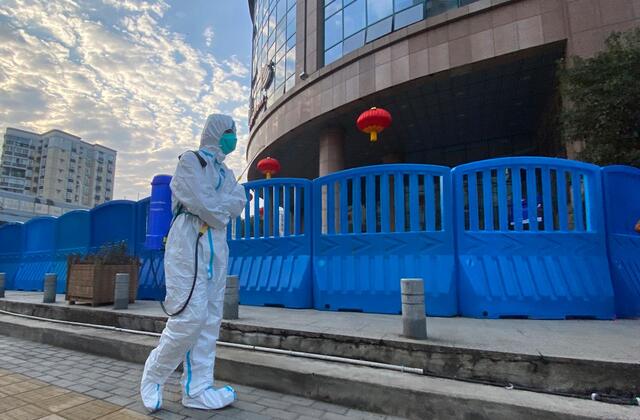The UN health agency says the latest investigation into the origins of COVID-19 was inconclusive and more research must be done, including the possibility of a laboratory accident.
Health experts say further research is needed to determine how COVID-19 first began – including a more detailed analysis of the possibility that it was a laboratory accident.
That stance by the World Health Organization expert group marks a sharp reversal of the UN health agency’s initial assessment of the pandemic’s origins, when it concluded last year that it was “extremely unlikely” that COVID-19 might have spilled into humans from a lab.
end of list
In a report released on Thursday, WHO’s expert group said “key pieces of data” are still missing to explain how the pandemic began. The scientists said the group would “remain open to any and all scientific evidence that becomes available in the future to allow for comprehensive testing of all reasonable hypotheses”.
It noted since lab accidents in the past have triggered some outbreaks, the highly politicised theory could not be discounted.
The report said all the available data showed the novel coronavirus that causes COVID-19 probably came from animals, likely bats, a similar conclusion to the UN agency’s previous work on the topic in 2021 that followed a trip to China.
The missing data, especially from China, where the first cases were reported in December 2019, meant it was not possible to identify exactly how the virus was first transmitted to humans.
Identifying a disease’s source in animals typically takes years; it took about 15 years for scientists to find the species of bats that were the natural reservoir for SARS, a relative of COVID-19.
Numerous avenues of research were needed, including studies evaluating the role of wild animals, which are thought to be COVID-19’s natural reservoir, and environmental studies in places where the virus might have first spread, such as the Huanan seafood market in Wuhan.
- Antarctic outpost hit by COVID-19 outbreak
- Chelsea face potential Covid-19 crisis as three first-team stars test positive ahead of Everton clash
‘We owe it to ourselves’
Former US President Donald Trump speculated repeatedly – without evidence – that COVID-19 was started in a Chinese lab. He also accused WHO of “colluding” with China to cover up the initial outbreak, citing the UN health agency’s continued public praise of the country.
In February, WHO Director-General Tedros Adhanom Ghebreyesus sent two letters to senior Chinese government officials requesting information, including details about the earliest human cases of COVID-19 in the city of Wuhan; it is unclear whether the officials responded.
In March 2021, WHO released a report about COVID-19’s origins following a highly choreographed visit by international scientists to China. The report concluded the disease most likely jumped into humans from bats, and there was no evidence to suggest there was a connection to a laboratory.
Yet after considerable criticism, including from some of the scientists on the WHO’s team, Tedros acknowledged it was “premature” to rule out a lab leak and said he asked China to be more transparent in sharing information.
The origins of the pandemic, which has killed at least 15 million people, have become politicised. Scientists say it is important to establish what happened to prevent similar outbreaks.
The team on the panel – known as the Scientific Advisory Group for the Origins of Novel Pathogens (SAGO) – said it was still impossible to do so because of a lack of data. They also say there are “recognised challenges” in investigating “such a long time after the initial outbreak”, although their work would continue.
“The longer it takes, the harder it becomes,” Maria Van Kerkhove, a senior WHO official on the SAGO secretariat, told a briefing, adding the WHO will support all ongoing efforts to better understand how the pandemic began.
“We owe it to ourselves, we owe it to the millions of people who died and the billions of people who were infected,” she said.





